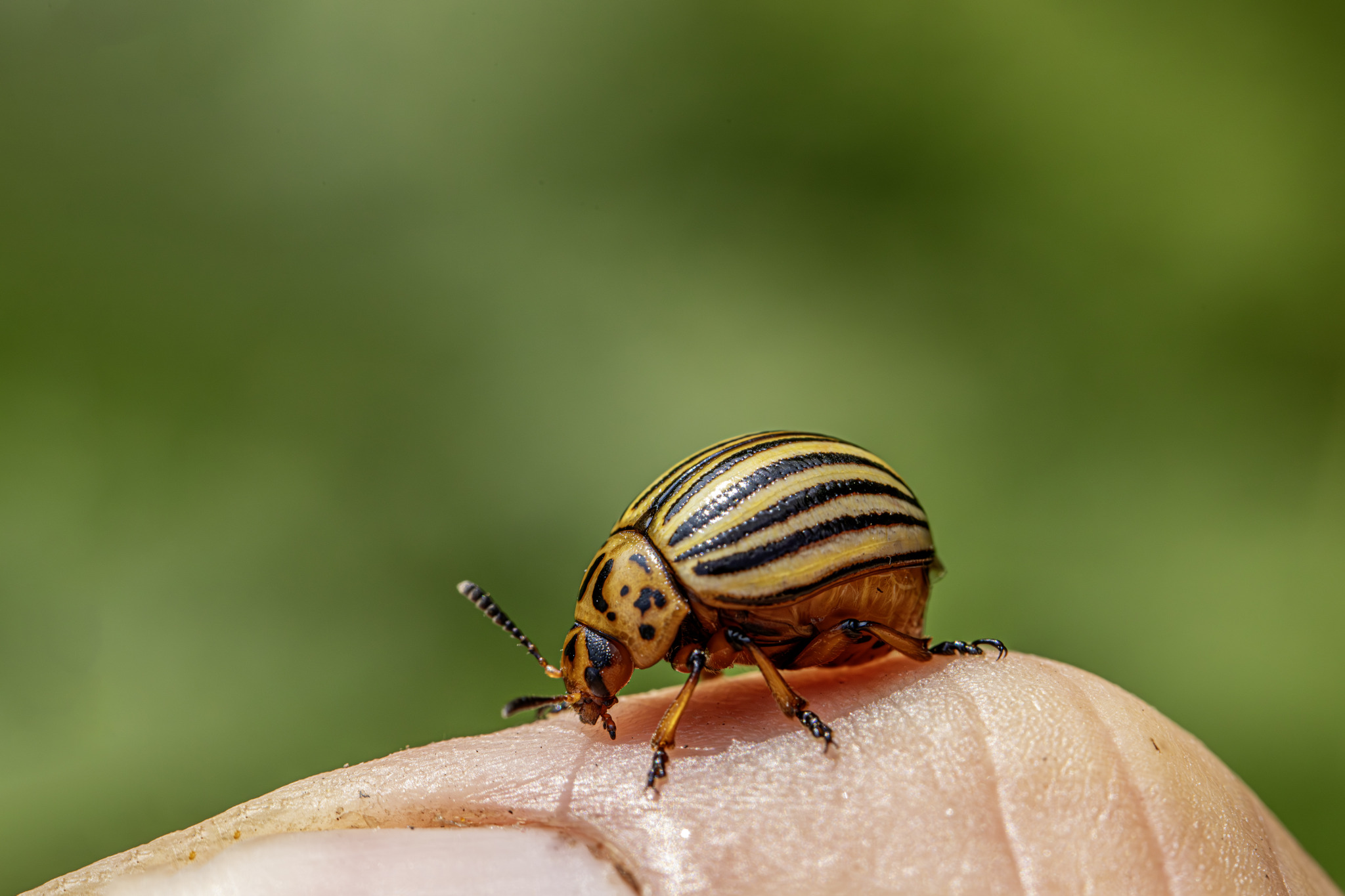The Colorado Potato Beetle (Leptinotarsa decemlineata) is a notorious agricultural pest, primarily known for its destructive impact on potato crops. Belonging to the family Chrysomelidae, this beetle is native to North America but has spread to various parts of the world due to its association with human agriculture. Here’s an overview of the Colorado Potato Beetle:
Appearance
Adult Beetle:
- Size: Adult beetles are about 10 millimeters long.
- Coloration: They have a distinctive appearance with a rounded, convex body. The elytra (wing covers) are yellowish-orange with ten characteristic black stripes running lengthwise. The head and thorax are also yellowish-orange with black markings.
Larvae:
- Size: Larvae can grow up to 15 millimeters in length.
- Coloration: Young larvae are reddish-brown with a black head, while older larvae are a more intense red to orange color, with two rows of black spots on each side of their body.
Habitat
- Preferred Habitats: The Colorado Potato Beetle prefers habitats where its primary host plants, particularly potatoes, are grown. It is often found in agricultural fields, gardens, and areas where wild solanaceous plants grow.
- Geographic Range: Originally from North America, the beetle has spread to many parts of Europe and Asia due to its close association with potato cultivation.
Life Cycle
- Eggs: Females lay clusters of bright yellow-orange eggs on the undersides of host plant leaves. A single female can lay hundreds of eggs in her lifetime.
- Larvae: After hatching, the larvae go through four instar stages, feeding voraciously on the foliage of host plants.
- Pupae: After the larval stages, they drop to the soil to pupate. The pupation period lasts about 10 to 14 days.
- Adults: Adult beetles emerge from the soil and continue the cycle, feeding on host plants and mating.
Behavior
- Feeding: Both adults and larvae feed on the leaves of solanaceous plants, particularly potatoes, but also tomatoes, eggplants, and peppers. This feeding can cause significant damage to crops.
- Activity: They are most active during the warmer months and are known for their ability to quickly adapt and develop resistance to pesticides.
- Overwintering: Adults overwinter in the soil, emerging in the spring to begin feeding and reproducing.
Impact on Agriculture
- Crop Damage: The Colorado Potato Beetle is one of the most significant pests for potato crops. Both larvae and adults can defoliate plants, leading to reduced yields and, in severe cases, total crop loss.
- Pesticide Resistance: This species is notorious for its ability to develop resistance to a wide range of chemical insecticides, making management difficult and necessitating integrated pest management strategies.
Control Measures
- Cultural Control: Crop rotation and removal of plant debris can help reduce beetle populations. Planting trap crops and maintaining good garden hygiene are also effective.
- Biological Control: Natural predators, such as certain species of beetles, birds, and parasitic wasps, can help control beetle populations.
- Chemical Control: While chemical insecticides are commonly used, their effectiveness can be limited due to the beetle’s resistance. Using a combination of insecticides and rotating active ingredients can help mitigate this issue.
Identification Tips
- Coloration and Markings: The distinctive yellowish-orange body with black stripes makes the Colorado Potato Beetle easy to identify. The larvae’s reddish coloration and black spots are also characteristic.
Summary
The Colorado Potato Beetle (Leptinotarsa decemlineata) is a significant agricultural pest, particularly for potato crops. Its distinctive coloration and patterns make it easily recognizable. Effective management of this beetle involves a combination of cultural, biological, and chemical control measures to combat its feeding habits and resistance to pesticides. Understanding its life cycle and behavior is crucial for developing integrated pest management strategies to protect crops from this destructive pest.
Views: 1120
Subscribe to the newsletter:
